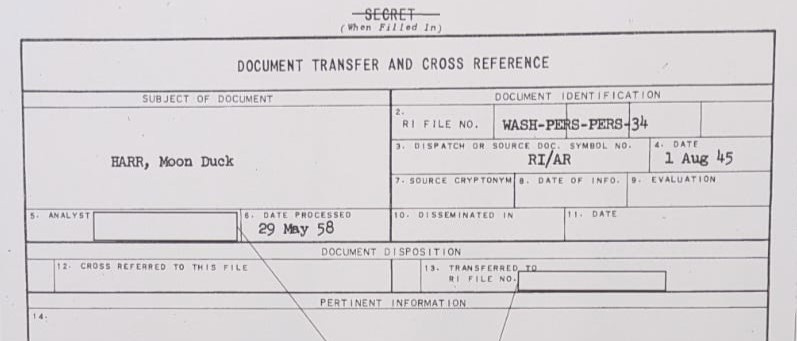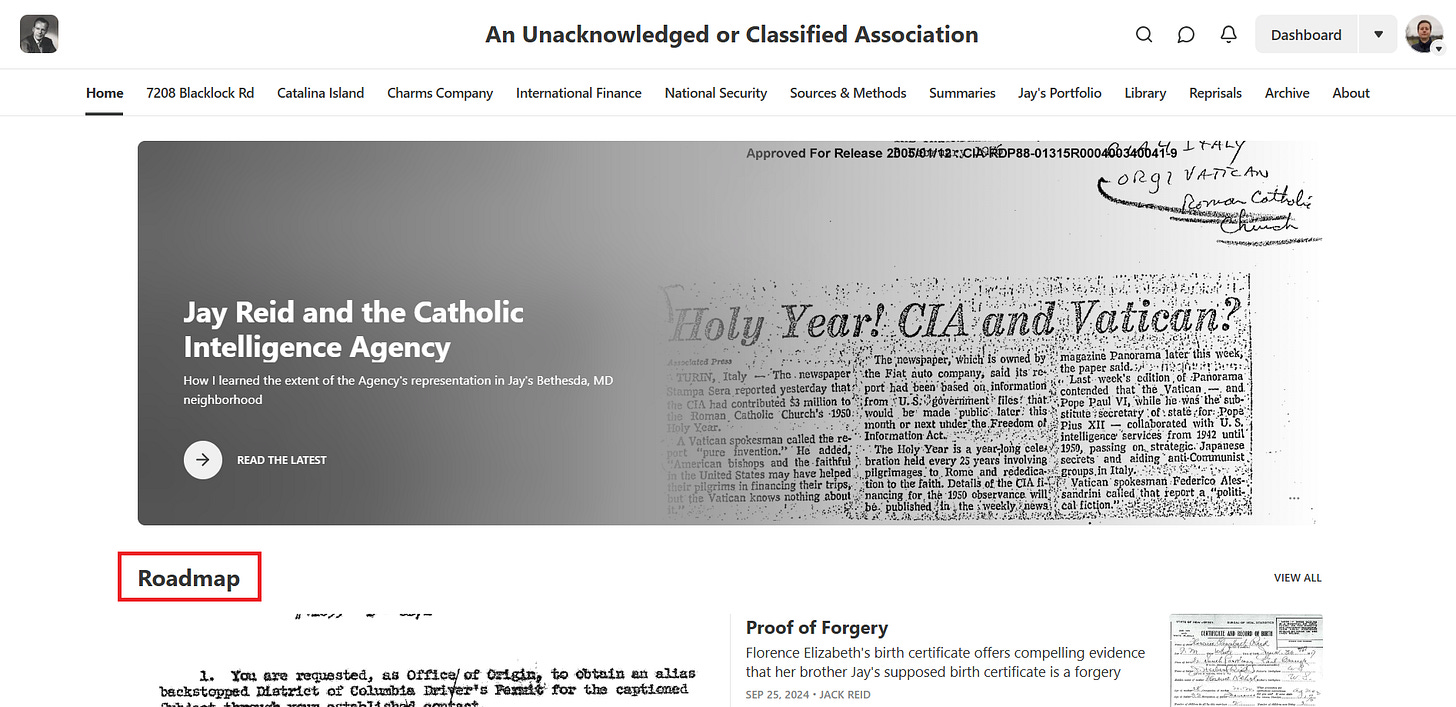Every five to six months, I find it beneficial to take a step back and look at the case in its totality.
For me, it is a time to reflect on my organization of the information I have gathered and written about. Are there connections to be made that I am missing?
It is also a great opportunity to examine where the research has advanced and where it has stalled.
With that in mind, let’s dive in.
Website changes
I suspect the vast majority of subscribers read articles via email or the app. Many, perhaps most, spend little time on the actual website, and that’s fine.
How the website is organized matters a great deal to me because it’s my resource for identifying factual tidbits that help me connect the dots. Thus, site design is something into which I put real thought.
It had become apparent to me in recent weeks that splitting the globe into sections was not doing anything to help advance my thinking.
Jay’s story plays out on the world’s stage, but thinking in terms of geography was not helping me make connections.
Therefore, I elected to change things up a bit. Core articles are now placed into one of seven sections based on the research strand of the article:
7208 Blacklock Rd - Jay’s longtime residence in an area of Bethesda, Maryland where many other intelligence officials also lived
Catalina Island - where the OSS agent Moon Duck Harr, who I suspect was Jay’s cousin Karl Harr, trained in the waning days of World War II
Charms Company - the candy business started by Jay’s uncle, with assistance from Jay’s father, that through a business relationship got pulled into the mystery and intrigue that surrounded Fidel Castro’s Cuban revolution
International Finance - although centered on the International Monetary Fund (IMF), this section also looks at other financial ties and entanglements between the IMF and other major players in the world of finance
National Security - inclusive of World War II non-intelligence pieces, but mainly focused on the National Security Council and especially the Operations Coordinating Board, on which Karl served from 1958 through the end of President Eisenhower’s second term
Sources & Methods - deep dives on the theory and practice of intelligence gathering, as well as operational techniques employed by the CIA, with a special focus on double identities (aliases, pseudonyms, cover arrangement, etc.)
Summaries - I expect summaries to be a recurring written product, especially as the case gets more complex
The other sections - Jay’s Portfolio, Library, Reprisals, and Archive - continue unchanged.
Developments
Subscribers who have just come on board in the last one to two months will want to familiarize themselves with the Roadmap articles, the full series of which can be found on the Home page.
From there, the next logical stop is the summary article from mid-May, which highlights the major discoveries from the initial phase of the investigation.
Since May, my research has centered on:
The Sprague Commission - why it was formed, its findings, and its implementation in the early days of the Kennedy administration
Jay’s neighborhood in Bethesda, including the CIA officer across the street, the one down the road, and the intelligence infestation at St. Bartholomew’s Catholic Church, a stone’s throw from Jay’s driveway
Detailed analyses on why the CIA opened 201 personality files, how backstopping worked, and the means by which the Agency’s covert agents paid taxes on their CIA-earned wages
Fred Dearborn, Karl’s predecessor as Vice Chair of the OCB, the impact of his untimely death on American national security policy, Allen Dulles’s attempted power grab, the CIA’s research and use of poison in assassinations, the impact of health conditions on the ten-year bureaucratic war between the CIA and the State Department, and the CIA’s preferred and alternative means of killing American officials in the early post-war period
Strange phenomena on and around Catalina Island, Carl Eifler and Project NAPKO, evidence that Project NAPKO was a cover operation, and a look at Robert Carter, who led training for Project NAPKO on Catalina Island
On deck
We are approaching the release of Jay’s FBI file via FOIA. I submitted the request in October 2022, and in 2023 I was told that at the current pace, I could expect to receive the documents around November 2025.
With DOGE, government shutdowns, and all the turmoil at the Bureau following the change in administrations, I am not counting on seeing those documents within the calendar year.
Still, hope springs eternal, so perhaps the release will come as the flowers bloom in the spring.
The other major FOIA request that I expect to receive sooner than later is for passport applications in the names of Jay Herbert Reid Jr. and Herbert William Reed Jr.
I submitted those requests in February of this year. The State Department’s average turnaround time for such requests is four months. So far, it’s been eight months of crickets.
Document disclosures are helpful, but as a rule, I do not count on them. I still have hundreds of pages of OSS documents to process, as well as new leads to pursue on Fred Dearborn’s death.
I’m also reading books right now on two other suspicious deaths involving high ranking U.S. government officials in the early Cold War period. Both have all the hallmarks of political assassinations carried out by individuals connected to the intelligence community, whether military or civilian.
Finally, I’m planning a deep dive into Jay’s childhood and adolescence, with a focus on his father’s business (mis)fortunes and his mother’s psychiatric instability.
Both of these interconnected issues would inform Jay’s decision-making well into his mid-forties.

For now, the single most perplexing finding remains the missing pages of Moon Duck Harr’s OSS personnel file, which were moved - most likely to the agent’s true name file - in May 1958, two months after Karl was named Special Assistant to the President for Security Operations Coordination.


